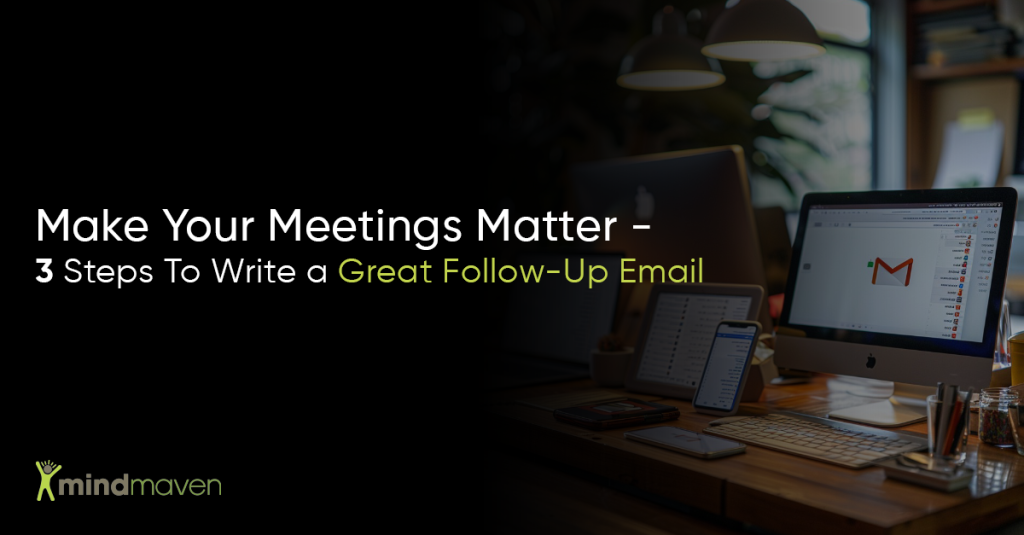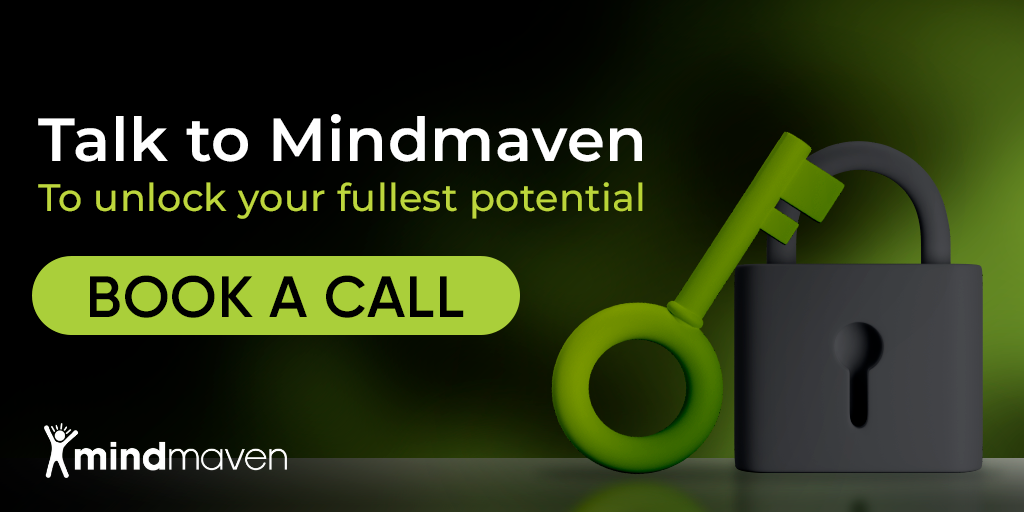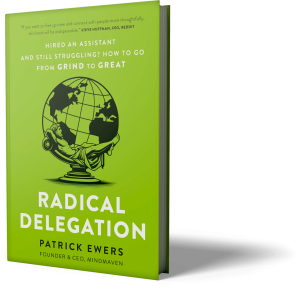
How To Write a Professional Follow-Up Email
If you invest 30-60 minutes of your time with someone, isn’t it worth sending a follow-up email?
Of course, the answer is yes, but urgent reactive demands can often take time and attention away from simple proactive tasks.
That’s why this article will give you a simple step-by-step process to send quick and effective follow-up emails, with practical examples, top tips, and valuable free support resources, such as Mindmaven’s email template checklist.
Why It’s Important To Send a Follow-Up Email
Follow-up emails aren’t just polite. They’re a powerful tool for reinforcing your value, building trust, and keeping relationships active.
In competitive markets where the difference between you and your closest competitor is razor-thin, a thoughtful follow-up can tip the scales in your favor.
Besides, when you look at the minimal time and energy investment involved in writing a follow-up email to your meetings, it’s really a no-brainer (especially with these follow-up email templates.)
Costly Mistakes To Avoid With Follow-Up Emails
This won’t be the first time you’ve thought about sending follow-up emails. In fact, it probably isn’t even the first time you’ve tried to make this practice into a habit.
But then, something happened; a crisis arose.
You invested your time and energy into resolving a situation and, as a result, didn’t have time to send your post-meeting follow-up email.
The crisis ends, but something else comes along, and the emails remain unsent. Sound familiar?
It’s the classic story of well-intentioned habits being crushed before they’re fully formed.
If you’re ready to commit to this productivity habit, here are three quick follow-up email tips to streamline the process and make it easier to remember to send those emails, no matter what happens.
3 Top Tips To Speed Up Follow-Up Emails
Tip 1: Create a Follow-up Email Draft Before the Meeting.
The draft can’t be too specific or detailed since it’s written before the meeting, but that’s okay. You can have a simple template that you flesh out after the meeting. Here’s an example of what this email draft might look like:
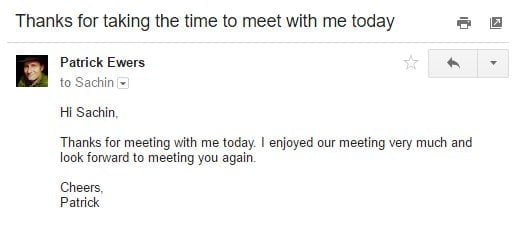
Once you’ve got this email in your drafts folder, you can personalize it with the key information after the meeting finishes.
Tip 2: Use Dictation To Capture Follow-Up Notes in Just 1-2 Mins
Straight after the meeting, capture relevant information and the key components you want to be included in your follow-up.
Here’s an article from Mindmaven about how to use dictation to boost your workflow efficiency.
Tip 3: Use a Follow-Up Email Template
A template can help you document the most relevant and important information, making writing follow-up emails quick and simple.
When you have a great template, you know what information you are looking for. Your Executive Assistant or Engagement Manager* can easily add the details you provide to your template if your time is required elsewhere.
*Note: An Engagement Manager from Mindmaven is an exceptional executive resource that combines the skills of an Executive Assistant and a Chief of Staff to dramatically boost productivity and free up quality executive time.
Use Mindmaven’s email template checklist to instantly craft thoughtful follow-up emails that will strengthen relationships.
3 Steps To Write a Great Post-Meeting Follow-Up Emails
An effective follow-up email has three components:
- Thank You
- Common Ground Reference
- Key Takeaways
Let’s walk through this three-step process to create a successful follow-up email after a meeting.
Step 1: Thank You
“Thank you” is usually a given in follow-up emails, so why even mention it? Because gratitude is one of the most powerful ways to make a connection.
There are two ways of communicating thanks: One is just saying it, and the other is meaning it.
Sentences like, “I really appreciated the time you spent with me today. I hope it was time well spent for you too,” or “Let me start by saying thank you for your time today ” are great places to start.
If you can fortify these statements by adding specific reasons why you’re thankful, that’s even better. For example: “I learned a lot from your suggestions today,” or, “I feel I will be able to act upon the advice you offered.“
The key is to ensure that your recipient perceives you as genuine. Here’s how this might look in practice.
Example 1: Thank You
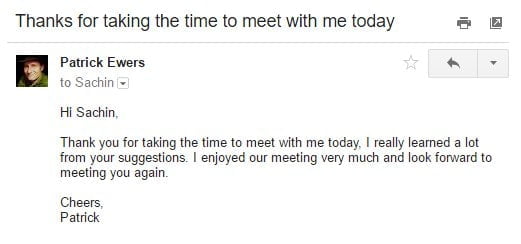
This gives you a good starting point. We will continue to build upon this email, using each component to add additional layers of value.
Step 2: Common Ground Reference
The second part of the email is a sentence about what you enjoyed about the meeting and what you have in common with those you met.
Establishing common ground has three primary benefits:
✅ It personalizes the email, so it doesn’t look like you’re just sending out a pre-written template. This can help you come across as caring, thoughtful, and attentive.
✅ People are attracted to positivity. By highlighting a positive element of the meeting, you can increase the likelihood that those you met with will consider it a success.
✅ Common ground is the source of all connections, and this component allows you to establish that common ground quickly.
Here’s how this might look in practice.
Example 2: Common Ground Reference

As a way to personalize and establish common ground, this follow-up email reflects on our enjoyable conversation about tea.
“I was particularly intrigued by your passion for tea. As you know, I love tea as well; and it’s not every day that I run into someone who appreciates a great cup of tea.”
Step 3: Key Takeaways
This final component is your opportunity to show that you’re committed to this relationship by going the extra mile.
Use this section to summarize the commitments given and received. This will underscore the meeting’s productivity and create confidence that you will follow through.
In addition, this component also creates an informal agreement that the other party will follow through as well.
For a powerful way of leveraging these commitments (and other vital sources of meeting information), click here to learn about Meeting Debriefs.
Here’s how this might look in practice.
Example 3: Key Takeaways

In this example, we summarize the key takeaways as clear bullet points:
Besides getting to know you a lot better, there are three key takeaways from our meeting:
-
- You are in need of hiring great engineers and find that very difficult to accomplish in today’s economy.
- We agreed to meet next week to discuss how we could work together to overcome this challenge.
- I offered to introduce you to Riviera Partners, one of the top engineering recruitment firms in Silicon Valley.
- If you feel I left out any other important aspects of our conversation, please let me know.
Follow up with agreed action points to create a commitment trail that provides instant value and builds trust that you will deliver what you say.
Find an Approach That Works for You
Do you see how the three follow-up email components work together to create an email that your recipients are likely to perceive as relevant, valuable, and meaningful?
The most important rule in Network Relationship Management is being genuine and staying authentic. If you say, “I’d never write that way,” that’s fine!
Focus on the components of a great follow-up email without copying these specific examples. You don’t need to use our exact words as they might not be right for you.
Ask yourself, “How would I communicate gratitude, establish common ground, and sum up the key takeaways?“
We all have our own style. Find yours and use the examples as inspiration to make meaningful connections with your own follow-up emails that help you scale your leadership.
Recap on Follow-Up Email Tips
To write effective follow-up emails, focus on three elements:
-
A sincere expression of gratitude
-
A brief reference to shared connection or conversation
-
A clear summary of key takeaways and next steps
When you consistently deliver follow-up emails with this framework, you’ll strengthen relationships, build trust, and elevate your leadership presence – one email at a time!
Take the Next Step Toward Superpowered Success
We’ve walked you through the essential steps to writing powerful, effective follow-up emails. Now, it’s time to put these strategies into action and watch your relationships flourish.
At Mindmaven, we’ve spent over a decade helping leaders from top Silicon Valley startups and tech unicorns turn small, consistent actions – like follow-up emails – into game-changing habits that fuel their success.
Our personalized approach and pragmatic playbooks will not only help you strengthen connections for breakthrough opportunities but also enable you to free up 12+ hours a week for greater freedom and fulfillment.
Ready to streamline your workflows and enhance your relationship-building skills?

